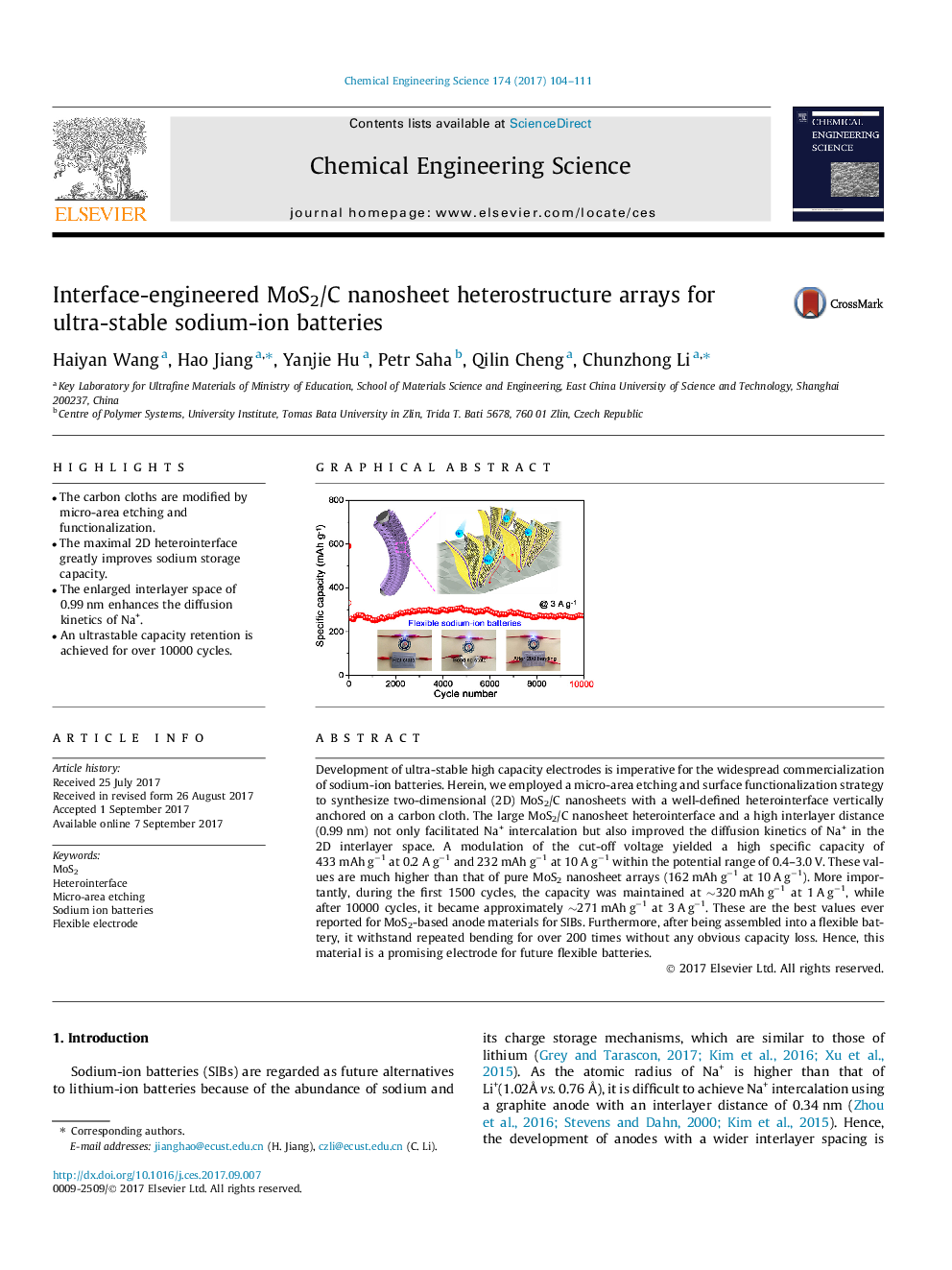| Article ID | Journal | Published Year | Pages | File Type |
|---|---|---|---|---|
| 6466874 | Chemical Engineering Science | 2017 | 8 Pages |
â¢The carbon cloths are modified by micro-area etching and functionalization.â¢The maximal 2D heterointerface greatly improves sodium storage capacity.â¢The enlarged interlayer space of 0.99 nm enhances the diffusion kinetics of Na+.â¢An ultrastable capacity retention is achieved for over 10000 cycles.
Development of ultra-stable high capacity electrodes is imperative for the widespread commercialization of sodium-ion batteries. Herein, we employed a micro-area etching and surface functionalization strategy to synthesize two-dimensional (2D) MoS2/C nanosheets with a well-defined heterointerface vertically anchored on a carbon cloth. The large MoS2/C nanosheet heterointerface and a high interlayer distance (0.99 nm) not only facilitated Na+ intercalation but also improved the diffusion kinetics of Na+ in the 2D interlayer space. A modulation of the cut-off voltage yielded a high specific capacity of 433 mAh gâ1 at 0.2 A gâ1 and 232 mAh gâ1 at 10 A gâ1 within the potential range of 0.4-3.0 V. These values are much higher than that of pure MoS2 nanosheet arrays (162 mAh gâ1 at 10 A gâ1). More importantly, during the first 1500 cycles, the capacity was maintained at â¼320 mAh gâ1 at 1 A gâ1, while after 10000 cycles, it became approximately â¼271 mAh gâ1 at 3 A gâ1. These are the best values ever reported for MoS2-based anode materials for SIBs. Furthermore, after being assembled into a flexible battery, it withstand repeated bending for over 200 times without any obvious capacity loss. Hence, this material is a promising electrode for future flexible batteries.
Graphical abstractDownload high-res image (99KB)Download full-size image
